In The Hot Seat
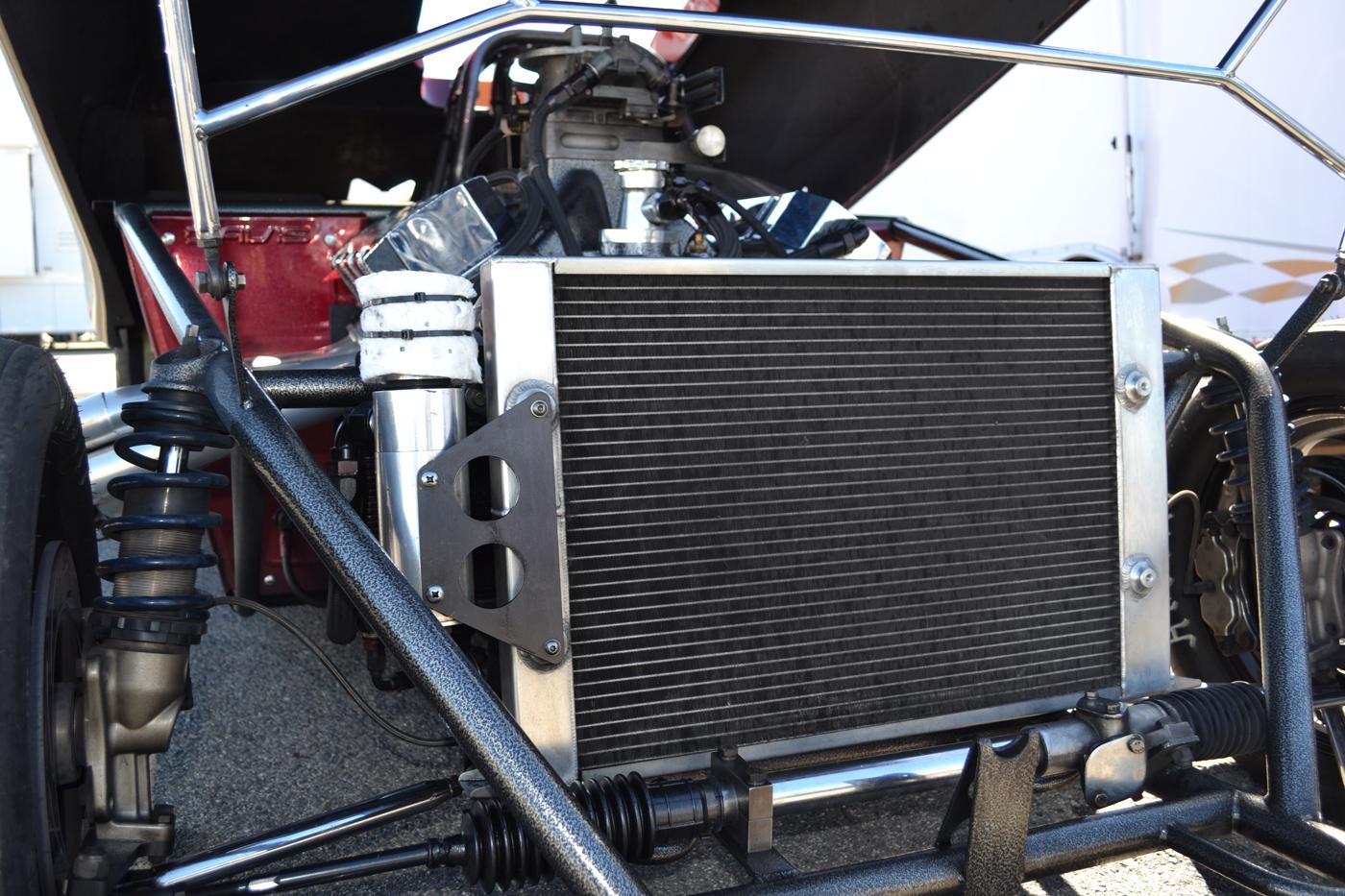
HOW RECENT ADVaNCES IN COOLING SYSTEM COMPONENTS ARE IMPROVING THE PERFORMANCE OF TODAY’S Race cars.
Targeting the cooling system as part of a weight-reduction effort may seem like a risky strategy, especially for a drag-and-drive car that boasts a massive, nitrous-craving V8 pumping out more than 2,700 horsepower.
But that’s where John Pairaktaridis of Delta Performance Automotive Group (PAG) in Astoria, New York, said he could help Dave Schroeder and his cousin John Ens with their street-legal, Pro-Mod style 2019 Corvette. The pair are two-time winners of the HOT ROD Drag Week, including in 2021, when the car averaged 6.793 seconds at 198.08 mph at five different tracks that required 1,000-plus miles of commuting on public roads between races.
“Drag Week is a wonderful R&D testbed because they find ways of destroying your product,” said Pairaktaridis.
Schroeder had won an earlier Drag Week with a 1966 Corvette, and the plan was to transplant many of that car’s vitals over to the new race car, including the 872-cubic-inch Reher-Morrison all-alloy engine with four stages of nitrous and a very robust Delta cooling system.
“I said, let me build you a mono-core radiator with the same dimensions, same fans, same shroud, same everything, just thinner. Then let me know the results,” added Pairaktaridis.
“John told us that the industry really hasn’t embraced the single-core radiator,” recalled Ens. “So, that was the one we put into the new car, and it has worked out extremely well.”
Conventional wisdom suggests that a larger or thicker radiator will provide greater cooling power; that a double-pass design will work better than a single-pass. Three- and four-core radiators have been built based on the reasoning that more cooling area is better. However, it’s harder for air to get through that mass of metal, which completely negates any cooling efficiency that the additional surface area could provide.
Today, new tube-and-fin designs developed from extensive computational fluid dynamics (CFD) analysis and even wind-tunnel testing are giving manufacturers more options and flexibility in designing systems that are lighter and more thermally efficient.
What follows is a sample of other companies in the industry whose sources share additional trends that benefit racers such as the continued growth of brushless fan motors, unique fan blade designs that are more efficient, development of auxiliary components such as expansion tanks, and the increasing number of complete radiator-fan-shroud packages to facilitate engine swaps and improve factory applications.
Results Oriented
The new Delta mono-core radiator helped the Schroeder-Ens team shed more than 20 pounds off the nose of the car because much less coolant was needed to fill the system.
“And it actually cooled the car better,” praised Ens, noting a chilly engine is critical to a drag-and-drive gameplan. “We run such a large camshaft that we have to keep our lash extremely tight for the road trips—tighter than a person would ever race at. Our motor grows .002-inch for every 10 degrees F of engine temperature. If you can imagine, we set up the valves at 70 degrees F, and the engine goes to 170 degrees. The hottest we’ve ever seen John’s setup was about 170 degrees. On a cool night, we’re running in the 140s and 150s on the road.”
“It did cool better,” agreed Pairaktaridis. “This is one of those examples where CFD work and mathematical modeling translated to empirical data. It doesn’t always happen, but this was one of those situations where it actually made sense.”
The Delta system also includes a pair of 16-inch brushless fans and a remote electric water pump with dual outlets that flows 65 gpm. “It also has a four-inch stainless-steel impeller,” said Pairaktaridis.
While running less coolant provided weight savings and eventually increased thermal efficiency for the drag-and-drive Corvette, there are other race teams looking to increase the coolant capacity of their systems.
Delta’s new mono-core radiator helped the Schroeder-Ens
drag-and-drive team shed more than 20 pounds off the nose of the car because much less coolant was needed to fill the system. “And it actually cooled the car better,”
said John Ens.
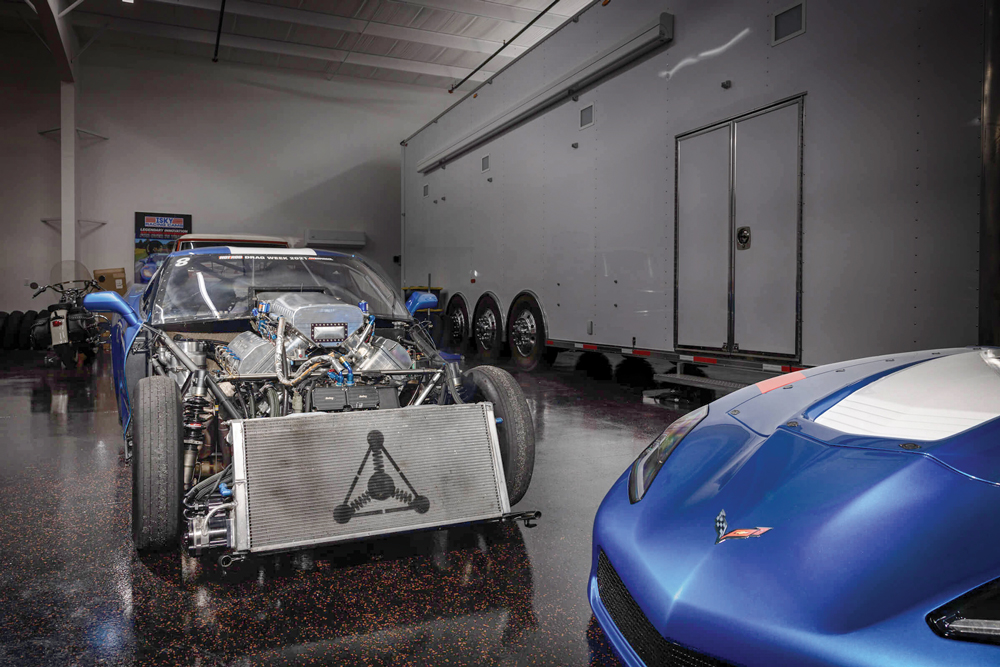
“We definitely see guys wanting to run bigger reservoirs to build up their ‘thermal battery,’” said Jack Anderson of PWR Advanced Cooling Technology, Indianapolis, Indiana. “We build plenty of customized pressure cans to suit whatever specific setup the teams can run. Obviously, more water means the bigger thermal battery, but more water means more weight,” he cautioned.
PWR specializes in custom cooling systems for a wide range of racing series but also sports a line of off-the-shelf products that often fit the needs of a team. With horsepower levels continuing to increase dramatically, the team at PWR has seen pressurized cooling systems become more vital to the operation of the car.
“Rather than running a radiator cap that might open at 30 or 35 psi, we basically have a closed system with a pressure-relief-valve that might be set to 60 or even 75 psi. That way you can run much hotter temps without actually losing any water,” said Anderson. “That helps if you’ve got a high-horsepower car, and you might be stuck with some traffic in a low-speed section of the track. It gives you more of a thermal battery to play with in that system.”
According to Anderson, the key to an effective cooling system is the radiator. “We see massive differences in our internal comparisons with our latest fin-and-tube technology,” he said. “An off-the-shelf system might get you by, but being able to customize it and extract every last bit out of it really makes the difference as you try to compete up front.”
Airflow is also paramount to proper cooling, and companies are seeing some car builders not prioritizing radiator placement. “Obstructing good airflow is a big thing,” said Fred Militello of Be Cool Radiators, Essexville, Michigan. “You know, putting turbos right out in front and things of that nature. They need to spread out the real estate and give the radiator a chance to breathe. Guys start building motors and stacking stuff everywhere. Before you know it, there’s no place to put a radiator.”
Veteran chassis builders will mock up all the components and call the radiator company with relevant dimensions. “Then we can do up a custom blueprint for them and send it over to them,” noted Militello. “They can do some alterations to the car or the blueprint, and we can finalize a build for them.”
After airflow obstruction, the biggest mistake racers often make when setting up the cooling system is water speed. “It’s a big issue. People think that they have to slow the water speed down to give the radiator a chance to do its job. But if the water speed’s too lazy, it’s not cycling through the engine quick enough,” said Militello.
Sluggish water speed can reduce the pressure and volume inside the radiator tubes, which then reduces the efficiency of the heat dissipation. Racers can work with thermostats and restrictor plates to control the water speed in addition to changing water-pump and crank pulleys.
On the street-performance side, Militello said complete retrofit packages for popular muscle cars is one of the hottest trends in the industry. “The LS market is where it’s at right now,” he confirmed. “Whatever, an old Chevelle or Camaro, they’re looking for a plug-and-play package for a crate motor or something out of salvage. Right now, we’re even doing one for a 1936 Chevrolet.”
A complete package will include a radiator with the proper sized inlet and outlets, steam ports for LS applications, custom aluminum shroud, and high-torque electric fans. Other accessories include a billet recovery tank, billet radiator cap, and wiring harness with relays and sending units.
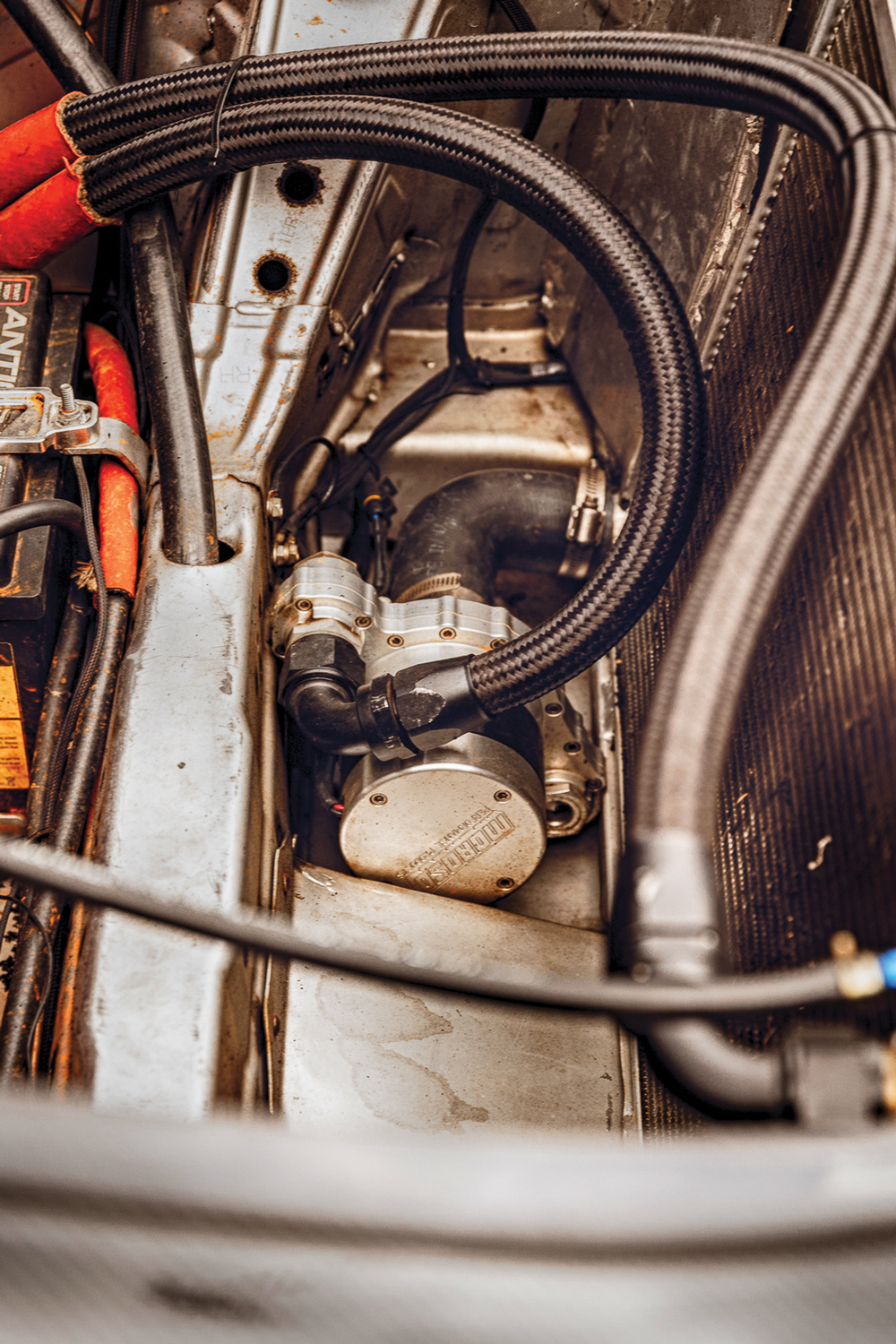
“We can get them in a natural or polished finish,” Militello continued. “A lot of companies don’t offer polished. In natural finish, a lot of times the guys want to paint them, but we shy away from that. Painting the core will obstruct heat dissipation.”
Northern Radiator in Willmar, Minnesota, is adding more versatility by offering radiators with threaded hose connections. This allows various types of hose connections, depending on the application.
“It’s really nice for distributors who can have fewer part numbers because the hoses can be changed,” said Tracy U’Ren, adding that LS swaps are also driving much of the development at the company. On the competition side, some racers are moving to larger radiators.
“We just built a 35- by 19-inch dual-pass with an LS steam port for a Baja racer. Before, our biggest radiator was a 31-inch. Now we have a radiator for the big trucks,” U’Ren said, adding that more racers are also considering cooling systems that can serve a variety of events. “They’re looking to have the cooling so they can bounce around to the style of races that are going on at the moment. So, making sure that the cooling products that we put into the vehicle can handle the road races just as much as the drag. It may be a little bit overkill for the strip, but it will definitely stay up to speed on the road courses.”
Expanding the market for high-performance vehicles is also a priority for many companies producing cooling products. PROFORM Parts, which is based in Warren, Michigan, is growing its 1-2-3 system that comprises a matching radiator, fan, and shroud to include higher horsepower applications.
“The 1-2-3 is a complete system,” said Ryan Salata. “It comes assembled in the box with a thermostat, so you’re not hunting for 100 pieces in a kit. This is not a kit. It looks like it came from the factory and drops in as a unit. We’re up to 800 hp with some of the units. Some are universal and some are for LS conversions with the steam port.”
While brushless fans are drawing most of the headlines these days, they are expensive and more difficult to set up. Maradyne in Cleveland, Ohio, has developed a new Smart Start brushed motor that provides some of the benefits of a brushless motor without the higher cost.
“Our brushed fans do the trick and work forever,” said Jim Kahl. “But they do have brushes that can wear out, and they’re one speed. When they go on, they’re full power.”
One of the advantages of a brushless fan is its variable speed, and the fact that it draws less amperage than a brushed fan. The strategy behind the Smart Start motor is a smooth, controlled startup that draws less current than a standard motor that goes from zero to full speed almost instantly.
“This Smart Start fan winds up,” said Kahl. “It takes three seconds to go from start-up to full speed. That eliminates the amp spike at the ignition of the fan, which is similar to a brushed fan. But you don’t need a PWM controller with this fan. It’s a brushed fan, but it has operational features like a brushless at a fraction of the price.”
The Smart Start is available in 12- and 16-inch sizes. Maradyne has also combined the Smart Start fan with the Jetstreme Supreme blade that the company introduced earlier. The original Jetstreme blade was an S-shaped design, while the Jetstreme Supreme adds curvatures in the blade surface similar to a sickle.
“That blade does two things,” said Kahl. “It moves more air. Our original Jetstreme with the S-blade was 3,100 cfm, and the new Jetstreme Supreme with the sickle blade is 3,400 cfm. And the way it cuts through the air, it sounds quieter. That’s a big advantage for the street guys.”
Maradyne is developing a brushless fan system, which will eventually give customers three price levels between the brushed, Smart Start, and brushless.
“We’re always keeping our eyes and ears open for improvements or new product technology,” added Kahl. “The really big question is EV. As more turn to electric vehicles, where are fans going to be needed? So we’re keeping an eye on that because everybody knows electric vehicles, like them or not, are coming.”
Accessorizing
In the category of new accessories for cooling systems, Top Street Performance in Santa Fe Springs, California, has new serpentine front-drive kits that offer a cleaner appearance and allow for the addition of air conditioning. Also driving sales is the increased use of electric water pumps. Current models include small and big block Chevy along with small and big block Fords.
“The next one will be for an LS engine,” said Ralph Martinez. “Our water pumps have been popular. We advertise that they flow about 40% more than your stock water pumps. That really intrigues customers, especially when you have a large engine that gets hot. The most important starting point would be a good water pump.”
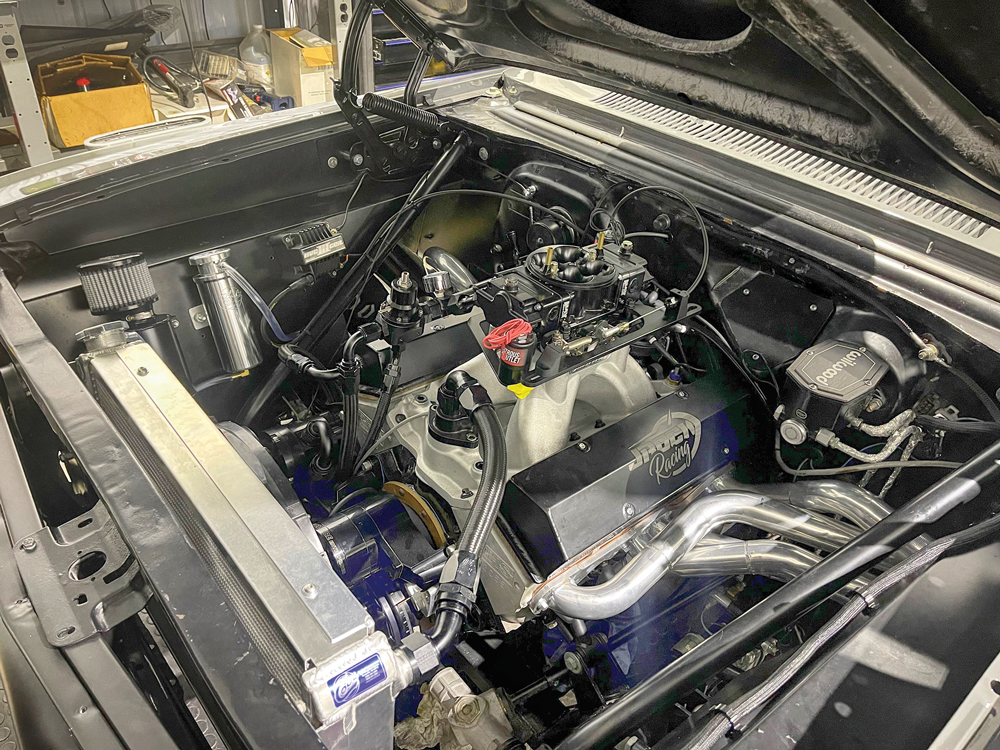
Another accessory popular with performance enthusiasts is upgraded overflow, expansion, and recovery tanks. Moroso in Guilford, Connecticut, has expanded its dedicated replacement applications for performance vehicles and select UTVs.
“We’ve also come out with different coatings on some tanks,” said Frank Thibodeau, noting that replacing the plastic OEM tanks is driving sales. “The plastic tanks get beat up from heat cycles, and they’re going to crack and fade over time. An aluminum tank is going to give you better appearance and it’s much more durable.”
Late-model performance applications are the most popular, such as BMW, Mazda Miata, Ford Mustang, Chevy Camaro, Dodge Challenger, Lotus, Nissan GT-R, and Subaru. Interest is also growing for side-by-sides, including Polaris.
“They’re direct bolt-in replacements, so no additional modifications need to be done. The plastic tanks will fail after repeated high-heat applications. That’s not good in a race-car situation,” said Thibodeau. “You don’t want coolant dripping all over the track. All the caps are all-billet aluminum, so you can put the cap on multiple times without worrying about damaging the receptacle. Everything is welded, and we use billet aluminum fittings for the tops and the bottoms. So everything is really high quality.”
Final Advice
When evaluating efficient cooling systems and determining common mistakes that racers make, sharp-eyed observers may have noticed a key piece of advice missing from this discussion.
“Not having a big enough oil cooler is probably the biggest mistake,” observed PWR’s Anderson. “We spend a lot of time working with oil cooling because typically that’s the more important fluid to cool. Obviously, you have to cool the water, but engine oil is very important.”
Fear not, because oil pans, coolers, and pumps and their contributions to cooling efficiency will be discussed in the June 2024 edition of PRI Magazine.
The final bit of advice from industry experts may appear obvious, but it is essential to setting up a race-effective cooling system.
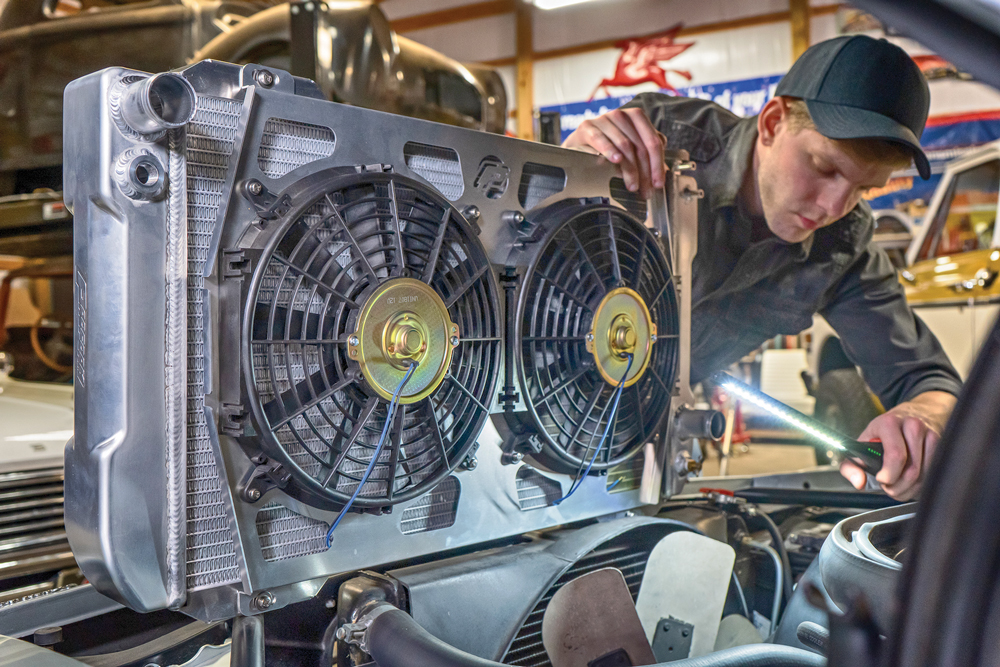
“You need to know where the hottest coolant is, not the hottest point on the engine,” observed Pairaktaridis, noting that some engines may have the temperature sensor in the head near an exhaust header. “It may be misleading, because the last thing you want to base your cooling system off of is your exhaust temperature. Knowing where you’re taking the temperature is very important, and we need to know what the hottest coolant is doing.”
“Basically, the warmest part of the cooling system is usually your upper hose area, where the water’s releasing out of the engine and going back into the radiator,” said Militello. “That’s your true temperature of the engine, so it depends on where the temperature sensor is mounted. The gauge may not be reading properly because the sending unit is in a cylinder head next to an exhaust port. If it’s a mechanical gauge, the sending unit needs to be close to the upper hose area.”
The correct coolant temperature was quite pivotal in setting up the cooling system in the Schroeder-Ens Corvette. “In a lot of ways, our system is set up like a road race car or like a NASCAR car,” said Ens. “We’re trying to cool from all four corners of the block. Temperature-wise, you know, the hotspot always wins.”
SOURCES
Be Cool Radiators
becool.com
Delta Performance Automotive Group
deltapag.com
Maradyne
dcm-mfg.com
Moroso
moroso.com
Northern Radiator
northernradiator.com
PROFORM Parts
proformparts.com
PWR Advanced Cooling Technology
pwrna.com
Top Street Performance
topstreetperformance.com
 MEMBERSHIP LOGIN
MEMBERSHIP LOGIN JOIN PRI
JOIN PRI


